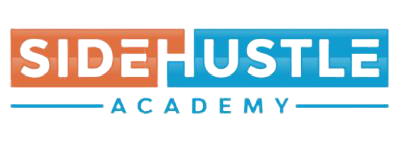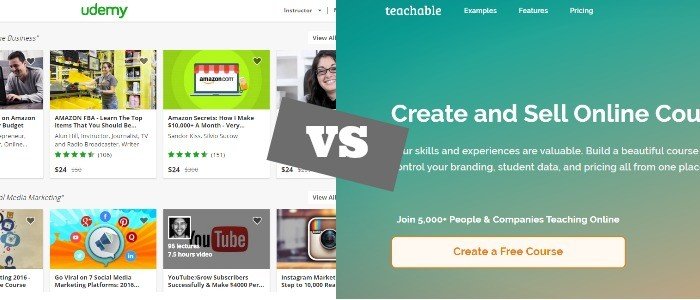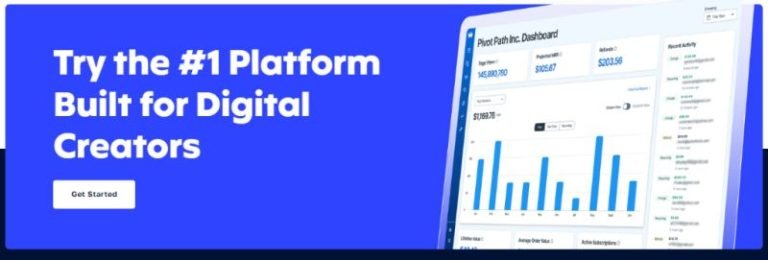Udemy vs Teachable – Which Platform is the Best [Updated for 2018]
Think about this:
Creating just one online course could earn you a nice income on the side month after month. All from just teaching something that you already know.
Currently, I’m in the process of creating and selling my first digital course. At first, I was really excited about the thought of what I was creating but over time I’ve found that this harder than I first thought.
One struggle I’m dealing with is what platform I want to put my course on. One of the first platforms I came across a while back was Udemy. However, I recently came across another platform called Teachable that also carry’s a lot of great benefits as well.
As you can guess this led me to do a little more research and in this article, I’m going to share what I’ve learned from this and also share which platform I plan to put my future course on.
So if you’re in a similar situation then keep reading.
Valuable Resource: Looking to create your first online course? Then check out this free webinar “7 Steps to Launch Your Own Profitable Online Course” presented by Teachable.com
Udemy vs Teachable Platform
To simplify things I broke things down by category and in each category I will share the good and the bad. I also included a video below as well to help you get an overall look and feel of how both of these platforms work. You can check that out at the end of the article.
#1 Marketplace
The most obvious difference between the two platforms is that Udemy has a marketplace while Teachable does not. This can be a great thing for some or a huge downside for others.
For example, if you’re someone who’s new to online marketing looking to get started working with Udemy could be more advantageous because the marketplace could drive people to your course.
However, with Teachable, you could literally create your own marketplace instead of being in Udemy’s marketplace. So you have to ask yourself do you want to work in Udemy’s marketplace or do you want to create your own.
#2 Pricing
Recently pricing changed with Udemy and you could price your course up to $300 and as little as $9. Now all courses have to be priced between $20 to $50. More than that all courses can change prices within $5 increments.
Update December 4, 2016: Udemy has since updated their pricing and now allow users to price their course as low as $20 and as high as $200.
With Teachable you can price your course at any price you want to. If you want to price your course at $497 go for it. If you want to price it at $27 go for it. The other great thing is that Teachable allows you to also set up payment plans or even a subscription based model if you prefer. On top of that, you can even create a bundle of courses to sell at a certain price.
Pricing your course low isn’t all bad because with Udemy quantity is the name of the game. More than that most people know that Udemy offers sales on all of their courses every month and most people rarely pay full price for a course.
When it comes to pricing it really depends on your goals. If your goal is to build a following that you could eventually bring back to your own blog then Udemy is the answer. If this isn’t your goal then maybe Teachable is the answer.
#3 Competitiveness
Another area to consider is the competitiveness of the platform. With Udemy you’ll be competing with all the other courses in the marketplace. For example, if you want to create a course on how to write a great resume you might be competing against several other courses on the same topic.
With Teachable you are creating your own marketplace which means no one is competing against you but yourself. This eliminates people doing a price comparison against your courses.
However, another reason people tend to go with one course or another on Udemy is a number of students in your course. For example, if your course has 10 students in it and a course similar to yours has 5000 students people will tend to go where the crowd is.
#4 Fees
When it comes to Udemy and Teachable both of them have very different fees they charge. With Udemy they charge three different fees depending on how people find your course.
- If they come directly from Udemy and buy your course then there will be a 50% split on the earnings.
- If you send them to Udemy via a coupon code you’ll get 97% of the profit while Udemy will only get 0%. Udemy doesn’t say who gets the remaining 3%.
- If someone recommends your course as an affiliate you’ll earn 25%, the affiliate will get 50%, and Udemy will get 25%.
Side Note: Their are a few other pricing guidelines if you would like to see all of them you can check them out by clicking here.
On the other hand, Teachable has a completely different pricing structure.
- Free Account – You don’t pay any monthly fee but for every sale you make it will cost you $1 + 10% + credit card fees.
- Basic Account – Will cost $39 a month + 8% + Credit Card Fees
- Professional Account – Will cost $99 a month + 5% + Credit Card Fees
- High Volume Account – Will cost $299 a month with 0% transaction fees up to $15,000 but Credit Card Fees will still apply. If you pay $749 a month you’ll get 0% transaction fees forever.
Overall Teachable charges you far less in fees versus Udemy which is a huge upside but if you have to go to a high volume account with Teachable it can get costly as well.
#5 Control
When it comes to controlling this is another factor you need to think about when you’re putting your course on either of these platforms. With Udemy once your course is on there, it’s there for life. You can’t take it off of there, however, you still retain ownership of the course.
With Teachable your course is your course and you have complete control of it. You can keep it on Teachable or even move it to a completely different platform.
However, one thing that is different between the two platforms is the user control. The students that sign up to your course in Udemy stay within Udemy and if you want to send them a message you need to use their internal messaging system.
In fact, Udemy prohibits instructors from pushing them to your own mailing list. With Teachable you have complete control here and you can do whatever you want for the most part. Teachable also has an internal messaging system but you can download the names and email address of your students and bring them where ever you want.
#6 Usability
Another area that Teachable has over Udemy is that it allows you customize the look and the feel of your courses from the URL to the actual page and even allows you to include branding elements such as your logo and colors.
Udemy doesn’t allow you to change any of these kinds of elements.
#7 Coupons
Both Udemy and Teachable allow you to give coupons to your course however Udemy recently changed this and has now limits people to 50% off coupons. With Teachable you can give the course away for completely free with a 100% off coupon.
Update December 4, 2016: You can also now offer up to a 75% discount on your course, however, the lowest discount you can go to is $10.
What’s also great is that both platforms allow you to set a time limit for how long a coupon will last. So if you only want to it last a week you can do it. This is probably the one area both platforms are very similar.
#8 Reviews
One area that has really discouraged me from using Udemy is the reviews. With Udemy the whole system is based on reviews and it seems that people will do almost anything to get a review of their course. In fact, it almost seems as if the review is more important than the person taking your course.
However with the new pricing changes on Udemy and only being able to offer a 50% off coupon this will hopefully curb people from giving away their courses for free to gain a review.
With Teachable reviews are not nearly as important, you’ll still want people to give you a review of your course to show social proof but the important thing is that everything won’t revolve around reviews.
#9 Affiliates
Both Udemy and Teachable also have the ability to offer your course to affiliates to sell as well. With Udemy the affiliate gets 50% of the revenue while you and Udemy will each get 25% each.
On the other hand with Teachable you can decide how much of a split you want to do on your sales. If you want to a 50/50 split or a 60/40 split it’s entirely up to you.
On top of that, both systems have dashboards that can show you how much your affiliates are selling and also show you exactly where all of your revenue is coming from. I haven’t personally looked at these areas within both of these platforms yet but overall I feel both of them are comparable here.
#10 Overall Looks & Appeal
Finally, the last area I want to look at is the overall look and appeal. However, to do this part justice I decided to put together a quick video to share my thoughts here. So check out the video below.
And the Winner is…
So now that I’ve shared the good and the bad you might be wondering which platform I plan to go with. To be honest both platforms have their ups and downs. For, I personally like Teachable the most since this platform gives me the most freedom and advantages.
If you would like to get started creating your first online course Teachable is the best way to go and the platform I plan to release my courses on.
So if you want to start creating your first course click here now.








Visiting from the SPI community. Saw your post there and I think you did a bang-up job with this! I hope you write another post to tell us how it went! I’m more of a Teachable fan (or hosting on your own site or using Thinkriffic, which is just like Teachable), but I see the benefits of Udemy from reading your post. I think what it ultimately comes down to in my world is control. I want the emails. I want to control my price. (I have heard Udemy offers discounts and sales on your courses that you don’t control- correct me if I’m wrong on that!) I want to build a relationship with my people, and I think Teachable (or self-hosting) wins over Udemy for the simple fact that communication stays in THEIR system. Thanks for this post!
Hey Kristen, thanks for sharing your thoughts. I agree with you that control is a major concern when it comes to choosing a platform. I’ve come across a lot of Udemy instructors who only use Udemy as their primary place to sell their courses and while I think it’s great that they can make a lot of money with this platform the reality is Udemy owns the platform and they can change things on them at any time they want.
With the recent pricing changes instructors can only price their course as high as $50 which can be a huge downside, plus Udemy get 50% of each sale. As a result I only suggest people use this platform to get started with and then transition over to something that they have more control over like Teachable. Like you, I personally like to have control of my email list as well an Teachable allows me the option to download my list of students as a CSV file anytime so I can take them with me.
However this doesn’t mean Udemy isn’t worth it. My underlying goal with Udemy is to help me build my mailing list. I feel if I can create a few great courses and offer great value there people will come back to my site and join my mailing list. Udemy just hit 10 million students and this is a big deal. I may not make a lot of money from Udemy but it could help grow your mailing list in the beginning when you’re just getting started.
Once I get my course up and test a few things I will definitely be writing a follow up post to this just share what I’ve all learned. Thanks again for checking out the post and sharing.
In exactly the same boat on my first ecourse currently in dev. I did come to the conclusion to go for both platforms but I would like the option to remove my course from Udemy and that seems a tad difficult. I am going for Teachable right now, only ,
I think for the control reasons. I am going to have to market hard online to build reach but can’t quite feel comfortable with Udemy and their pricing structure and discounting etc. I know volume might win over, but I’d like to build my own brand first, and don’t care if it’s a slow rise to begin with. Quality and loyals students vs numbers game ones. Your post totally helpful but my gut says Teachable.
I believe there is also Teachery.co which I am seriously looking at too. Yep, another one.!
Thank you so much for writing this post. I am a listener who just just happened to Google “Udemy vs Teachable” and was happy to see a trusted source had a great article on it!
It’s a hard decision, marketplace vs. control. Are you planning on offering the same course on both platforms or are you offering just an introductory-type course on Udemy? I am leaning toward doing the latter as I do not yet have an audience but plan on making my product so awesome that I will want to full control in the end. 😉 How do you plan on capturing those emails from Udemy? Just mentioning your site, or through messaging? I’m wondering what the workaround is.
Thanks again!
This is great thanks Chris. I’ve currently got a course on Udemy but after reading this I’m thinking I need to migrate to Teachable. Udemy are positioning themselves as a site for short cheap courses. A problem is my course is a complete 22 hour course and can’t be used to lead into a longer course.
I have a related shorter course I’m going to start developing soon, I’m wishing I’d done that one on Udemy first and then my existing one on Teachable.
Another problem is I didn’t have an existing audience when I started, my blog just went live this week. I’m pretty sure I can build a good list from my content but I need to figure out the best way to market it first.
I’ll maybe make my course private on Udemy (closed to new students) and start again. Put the short course on Udemy and use it, YouTube, Facebook, LinkedIn and my blog to market the main course on Teachable.
I listened to Pat Flynn’s podcast today and heard the founder of Teachable say they recommend a minimum price of $100 for courses. With Udemy I’m getting a 50% cut of $50 maximum. This seems like I’m leaving a lot of money on the table.
Anyway, I’m rambling now 🙂
Thanks again for the blog post. If you have any advice I’d love to hear it.
Maybe it’s best to leave the Udemy course online for now, get Teachable up and running on my own site and sell at the same price as on Udemy there, and then once the marketing is ramped up close the Udemy course and sell at a more reasonable price on Teachable?
Sorry if I’m sounding like I’m a money grabber btw. I’m really not, I genuinely want to provide value and help my students build their careers. I’ve put literally hundreds of hours into the course development though and getting $20 for it seems just too low.
Hey April, sorry for the lat reply. I’m thinking about testing Udemy at some point but like you said I just want to do a simple course there to see what works. I follow a few people who have courses on Udemy and many of them are keeping there courses that they already have there and migrating to places like Teachable because of the recent pricing restrictions. I still think it can be a great place to start but I wouldn’t build my entire business around it.
As far as capturing emails from Udemy you can’t send people directly from Udemy to an opt in offer in a oourse or through their email system. What you can do is send people to related content on your own site and then offer some sort of content upgrade to get them on your list. This is the best option I know of at this time. I hope this helps April and thanks for sharing your thoughts.
I completely understand Neil. $20 is just to low. In your situation I would look into trying to migrate as many people away from Udemy and bringing them over to your own personal mailing list where you have control over it.
The best way I know to do that is buy sending an email through the Udemy email system to your current students and letting them know about a relate blog post you wrote and offering some sort of content upgrade that they can get like a checklist, video, or cheat sheet. You can’t send them directly to a landing page from Udemy but sending them to a related article on your blog is OK.
I look forward on hearing more about what you decide to do.
Yeah I got a warning from Udemy for sending my students directly to extra content on my website which required their email address. You CAN send them to your website, but not to a page that asks for personal details. So you have to be a bit sneaky about it.
For anybody else reading this, get a website online before your Udemy course goes live, and brand all your videos. You don’t need any content on there yet, but you want your Udemy students to know where your website is for when you do.
Udemy is good for short mass market courses, and/or where you don’t have an existing audience or the time to do your own marketing. I’m just finding out now how much work the marketing is, it’s a huge learning curve. Once you’ve learned it and have funnels in place you can re-use them for your future courses though.
You can offer your courses on both Udemy and Teachable at first, and then make the course private on Udemy when you’re ready to cut over. This closes it to new students.
To clarify a few things you can do with Udemy…
You can opt out of their affiliate and marketing program. If you stay in it, if your course is bought by a student within a week of them buying ANY course from an affiliate link, the affiliate gets 50%, Udemy gets 25%, you get 25% of the sale. This is 25% after any discount, so you might make just a few dollars. $%^&# that! Only bad thing is you’re out of their marketing too so they don’t promote your course.
You can also opt out of their discount program. This does not take effect until the current campaign ends. (They’ve been offering 40% discount on all courses for WEEKS currently.) Your course will always sell for full price, but again it will be dropped from a lot of their marketing.
If a student buys a course using your coupon code, you make 97% of the sale. So you really want to be pushing this. Note that if they bought a course in the last week from an affiliate though, you’re down to 25% again. Another reason to opt out of the affiliate program.
Nice Article, love how you covered both and helps me determine what is best for myself and my clients.
Found this article through Google. I have a course on Udemy that has been live for 5 months. Since their pricing changes I’ve seen a steady decline in income. My first month I made $158. It’s now August 10th and no sales this month. I have great reviews and the course is well produced. I’m looking at Teachable as a viable option.
One big difference between the two platforms is with Teachable you are on your own for marketing. If you don’t promote your courses you will get no sales. The internet is not “If you build it they will come”. You make a bigger % with Teachable but plan on setting aside some money for marketing.
If you want to build a brand and have a relationship with your students Teachable, or Thinkific, is the way to go.
Here’s a good alternative to Udemy. https://arkmont.com/ gives teachers what they want, reduces the hassle of running your own website, maximum course exposure and a high teacher revenue.
You can also try talentlms.com
Thank you so much Chris for your insights! I have been going back and forth with this for months now-leaning towards Teachable. I have dozens of business programs that I created over 30 years as a learning and development professional. I have been breaking them down to bite size modules and just want to get them to a place where people can buy them and I can obtain some passive income. Better than sitting on the shelf and gathering dust. For these programs I am considering trying Udemy. As an independent transition coach I have now been developing additional programs to attract others to my brand, create a following, differentiate myself and grow my new business. I am thinking I will put use Teachable for this purpose as there is potential to control more and charge what the market is capable of supporting. Does this sound like a good plan? Any advice welcomed from anyone!
Hi Chris, Thank you a lot for this helpful article. Some updates and additional thoughts:
* Udemy has changed its pricing system more or less back to the one they had before the experiment. I think it would be good for future readers of this article to know that. There’s again a lot more freedom with pricing. Maybe you want to update this post to reflect that.
* Teachers can use Udemy as a free hosting platform for their online courses by making their courses private, selling them on their own website and then sending the customers with a 100% coupon code to Udemy.
* A lot of people underestimate how much work is needed to market a course. So it’s a plus for Udemy that you have a platform with active users that also promotes your work. You still need to position your course correctly, have a great intro video, a good title, outstanding content etc. But at least you don’t have to find people who might be interested in your topic. At least not immediately.
So I have to say that Udemy has some interesting advantages especially for beginners. But the one thing I don’t like that you also mention in your article: I would give away my students to Udemy. I could only contact them through Udemy and only in ways Udemy allows. And that’s pretty much a no-go for me. And as the pricing changes showed: they can change the rules anytime and however they want…
Hey Jan thanks for sharing your insights I really appreciate it. I definitely need to update things. As far as the pricing goes I didn’t know they switched things back and started giving people more freedom with the pricing again. I agree it can be a great platform for beginners but as you said you don’t have much control over things and Udemy can change them at any time.
Thanks again and I will get things updated.
Thanks – this is all so helpful! I don’t have a course ready to go online yet, but all these questions have been swimming around in my head.
I’m glad I could help Debbie. I’m actually working on my first course as well right now too. If you have any questions just let me know I’d be glad to help.
“I could only contact them through Udemy and only in ways Udemy allows.”
If you have a blog or website, can you mention that to your students–in your course or in an email?
Hi John,
Yes you can tell them about your blog, but you can’t tell them about anything that requires any payment or personal details. So you can’t tell them directly about your lead magnet.
Udemy are serious with their monitoring of this and you’ll be dinged with a warning if you breach the rules. Repeat offenders get banned from the platform.
HTH,
Neil
Thanks for sharing this Chris! I have a course in mind that actually has no competitors on Udemy but it will be worth $100+ and that is scary that I can’t ever take it off Udemy. Based on your descriptions I think I am going to go with Teachable. Thanks for the awesome site!
Jess, you just made my day!
Hi Tristan, I’m glad I could help. I have to agree Teachable gives you far more control over your courses versus Udemy. Thanks for sharing.
I think instructors will prefer Teachable to Udemy because of students review and control over their mail list. I am currently trying both platforms because I just came across Teachable after I have published my course on Udemy. However, Udemy still owns the market place.
I specially choose Udemy, because its a very good paltform to learn and sometimes get soem attactive coupon codes.
Thanks for writing this up, Chris!
I currently have a course at Teachable (together with a partner), but I have more courses I’d like to build. Teachable has been fantastic to work with and I’m hesitant about all of the control we’d lose with Udemy.
I like what you (and others) are saying about having a cheap, easy course on Udemy and then, somehow, trying to bring them over to your premium course on Teachable.
One thing I just noticed on Teachable is that I paid for a course recently and the course creator has another course inside his course from someone else as a bonus. Super easy in that way to co-create and share courses with partners. Very helpful.
Thanks again!
Hi Bradley, I’m glad I could help. I find Teachable to be the better option as well. Udemy has a big marketplace but I find that if you can build a list of your own you’ll be able have your own marketplace that you control and to me, that just makes a lot more sense. The last thing you want to do is build your entire business on rented land.
Thank you! This was very helpful, I was concerned with Teachable that they ‘owned’ my content. Now that I know I can move it. I am going to give them a try.
Hey Chris…great post!
It’s July 2017 now….having used both platforms for some time now, have you favored one over the other and if so ,why?
Hi blogger, do you monetize your website ? There is easy way to earn decent
money every month, just search on youtube – How to earn $25/hour
selling articles
Hey Chris, nice article. It was useful for me. But I am confused about something. How much should I price a course if the content is based on electronic hardware? and If I can use my personal blog for selling the courses like courses.mydomain.com by the use of teachable?
Excellent post. It looked like I wrote the first few paragraphs because that I where I am an how I found your article. Thanks for shortening my learning process. Your final decision is the same as mine.
very important point for me for choosing udemy, is you can use affiliate marketing for no costs! its the MOST important point. and in addition teachable payout is in the no cost package only with paypal. on udemy several options are possible for example payoneer. so for me was easy decission, i choose udemy, i dont want to pay for affiliate marketing. i didnt want to pay anything on a monthly basis, i made the course and the videoplattform has to sell it and can get their piece of the cake.
You made a wise choice Joe. Thanks for sharing.
There are a few other points that have not been addressed here:
* The moment you post a course at Udemy, you can´t shut it down, you can’t take it down, you can’t delete it: Udemy will keep it for ever, 5 years from now, 10, 20, 50, after you die… they’ll keep making a profit. (frankly, this is just incredibly abusive).
* Be aware that if you want your course promoted, a 20$ course after 50% affilliates program, their 25%, fees, taxes, etc. you could be earning as little as 1$ per course. 1000 sells is just 1000 bucks. Bear it in mind…
* There’s nothing in the contract you sign preventing Udemy from changing its selling scheme to, say, a subscription system, after which your profits could fall dramatically. Since you can’t take it down, Udemy will keep making a profit, you won´t.
* The fact that you can hardly communicate with your users (you’re not allowed to get their email directly) is simply incredibly abusive. I would never share my mail lists with Udemy. NEVER.
Regarding Teachable, they want to make aprofit regardles of how well your course does. Their pricing scheme borders rip-off status. Why don’t they have a scheme where they get a percentage of what you get for the first 100 students? a little less for the next 500, and so on? because this way they can make a profit. They make a profit off of you even if you lose money, it’s just bloody unethical! There are many other platforms like that now, they’re all ripoffs.
Can you freely host the same course on two platforms or migrate a course, or does Udemy gain certain rights to the content?
Thanks for the very useful information. Hmm….which one to go for? I attended a Teachable online training week a few months ago and they were so likeable I just wanted to sign straight up. But as a complete novice in marketing I really need some help with this. I don’t know where to start!
Hi Gary, I’m not sure if Udemy retains the rights to your course but they won’t let you take the course down. However, you can have your course on both platforms. Thier is no rule that says you can’t do this. The only downside to doing this is that most courses on Udemy sell for $10 to $20 and if you’re not interested in selling your course for that price then I would recommend Teachable as the best option.
Hi Maureen, I can agree with you 100%. Marketing can be a bit overwhelming. Teachable does offer a free option to get started. It’s a bit more restricted and they get a bigger percentage of the earnings from your course. My suggestion would be to create content around your topic on a blog. I would also start a mailing list. MailChimp has a free plan. The biggest thing here is to just take that first step towards creating your first course. In my case I’m creating a smaller mini course on a niched down topic that I know a lot of people want to learn about. This way you don’t spend a lot of time and money on something that may or may not work.
Thanks, Chris
My course has been available on the Online Travel Training Company’s portal since 2014. However this is not secure and more than 50 students have accessed my course and printed themselves a certificate without paying (and OTT won’t pay me, claiming that there’s nothing they could do about it!) That aside, I have a course all ready to market and I am very inexperienced in this. OTT will take my course off their site on 30 November.
I have a blog on my website which nobody reads (!) and a Facebook page which does attract some interest. I’m also a travel writer and contribute to a couple of blogs, but I’m clearly not doing enough!
Hi Chris,
Valuable article and thanks for that!
Do you think a topic like human biology will sell on udemy or teachable? Just a rough idea before I start things..
Hi Nival, human biology is a great topic. In fact, I know of one person who is having great success blogging about it here http://www.interactive-biology.com/ I don’t think he has a course on it but he drives a lot of college students to his blog which has been very profitable for him.
The key is to figure out who you might niche your course towards. If it were me I would gear your course towards college students or people in the education area. These people might even be struggling in certain areas that your course could help them in.
I hope this helps Nival. Keep me posted on your journey.
Hi Maureen, that sounds like a total bummer people are gaining access to your course without paying. Since you don’t have much of an audience you could put your course on Udemy but I’ve been leaning away from them more and more because people are mostly earning only $10 to $20 per sale. With Teachable you could sign up for the free version until you start to earn a steady income. As far as marketing goes one thing you could do is to find popular travel blogs to guest post on and drive people back to your site where they could sign up to your email list. From there, you could introduce them to you and offer your course as a solution. I hope this helps Maureen.